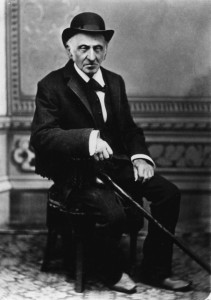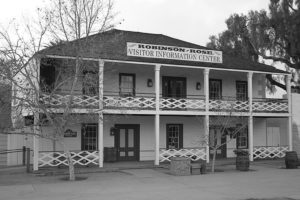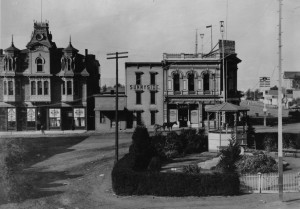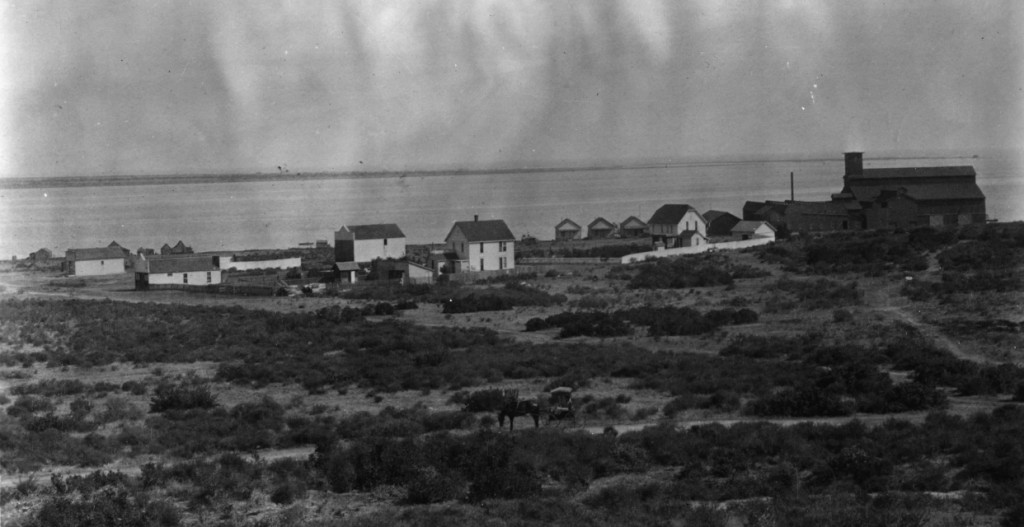Louis Rose
Code Values I – H – E – L – P
Louis Rose was born as Louis Leffman, son of Levi Nathan, in 1807 in the North German river port of Neuhaus-an-der-Oste, close to the North Sea.
His father adopted the family name of Rose in 1811.
Louis Rose immigrated in 1840 to New Orleans, moved west to San Antonio, and arrived by wagon train in San Diego in 1850.
He was the first Jew to settle in this city.
His first wife, Caroline Marks, declined to follow him to San Diego, and they were divorced after his arrival on the Pacific Coast.
San Diego
San Diego was then centered in the area today known as Old Town.
Louis Rose rented a building on today’s Juan Street for a hotel and saloon, and gradually expanded his enterprises to such other businesses as a general store, butcher shop, and tannery.
In addition to German and English, Rose spoke and wrote Spanish and French.
Eventually, he purchased the home of his late friend and business associate, James W. Robinson, alongside Old Town’s main plaza.
Today, that structure is known as the Robinson-Rose House.
Civic
Louis Rose served on San Diego’s first “American” Grand Jury.
He was a volunteer in the mobilization, led by U.S. Army Major G.B. Fitzgeral, to track down Indian insurrectionist, Antonio Garra.
In 1852, Louis Rose was elected to the San Diego City Board of Trustees.
As a city trustee, he was instrumental in helping pay off the debt that had bankrupted the city under the predecessor, San Diego Common Council.
With the creation of the County Board of Supervisors the following year, Louis Rose also served ex officio as a supervisor.
In that capacity, he helped designate public roads that still serve as highways today.
As a private citizen, Louis Rose helped organize the San Diego and Gila Railroad in an unsuccessful attempt to promote San Diego Bay as an ideal terminus for a transcontinental railroad.
Additionally, he served on San Diego’s School Board.
Late in his life, he was appointed Postmaster in Old Town.
Louis Rose was also a land owner of the first order, acquiring La Canada de las Lleguas, which eventually became known as Rose Canyon (stretching from Mission Bay into La Jolla), and assembling enough acreage along San Diego Bay to develop the 30-block long, 8-block wide town of Roseville, today a major portion of the community of Point Loma.
His tannery in Rose Canyon eliminated the high transportation costs for leather goods in San Diego. Until that time, San Diego, though rich in hides, had sent them to San Francisco and to the East Coast for tanning.
In developing Roseville, the entrepreneur donated numerous parcels of land as gifts to women who had invited him to dine with them and their families during his many years as a bachelor.
In so doing, he challenged the custom that only the men of the family, as heads of household, could own property in their own names.
Community
Rose was involved in the early development of San Diego’s Jewish community.
He helped to organize Congregation Adath Yeshurun, a transient forerunner to Congregation Beth Israel.
At his home in Old Town, Rose hosted High Holy Day services.
He officiated at a Jewish wedding.
He also helped to establish the Hebrew Benevolent Society, and provided the land in the Roseville area for San Diego’s first Jewish cemetery.
Fraternal
Louis Rose was an early member of San Diego’s Masonic Lodge #35.
Family
In 1869, Louis Rose married widow Mathilde Newman.
They had two daughters, one of whom, Henrietta, survived to adulthood and was a teacher in various San Diego schools for 45 years.
Her first assignment had been at Roseville Elementary School, her last at Roosevelt Junior High School.
Louis Rose died in 1888.
That same year, Congregation Adat Yeshurun was transformed into Congregation Beth Israel with the High Holiday opening of a synagogue building at Second and Beech Streets in New Town San Diego.
Louis Rose was buried at the old Jewish cemetery near Roseville, but his body and those of other pioneers were subsequently moved to the Home of Peace Cemetery on Imperial Avenue.
He is remembered in the place names of Rose Canyon, Rose Creek, Roseville, The Robinson-Rose House, and Louis Rose Point.
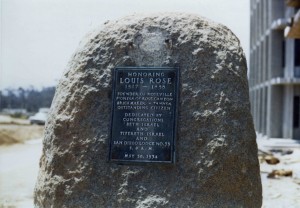
Honoring Louis Rose, 1807-1888, Founder of Roseville, Pioneer of Rose Canyon, Brickmaker, Tanner, Outstanding Citizen. Dedicated by Congregations Beth Israel, Tifereth Israel and San Diego Lodge #35, F. &. A. M., May 30, 1934, #WS1541
Source
- Donald H. Harrison, Louis Rose: San Diego’s First Jewish Settler and Entrepreneur (San Diego: Sunbelt Publications, 2005).
Donald H. Harrison is curator for this Louis Rose exhibit.
